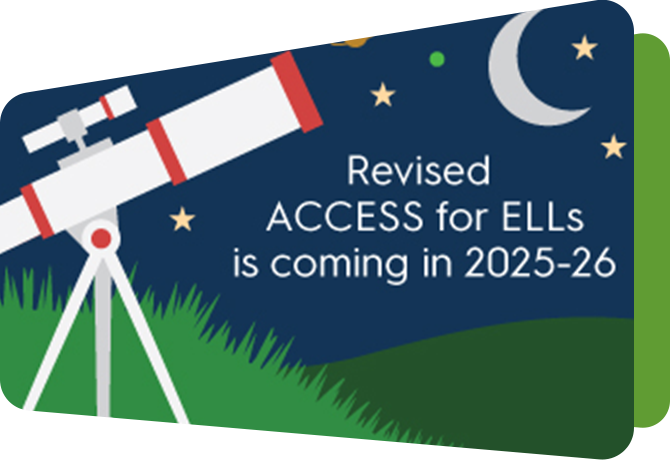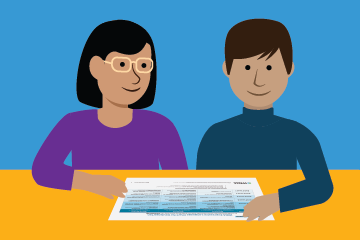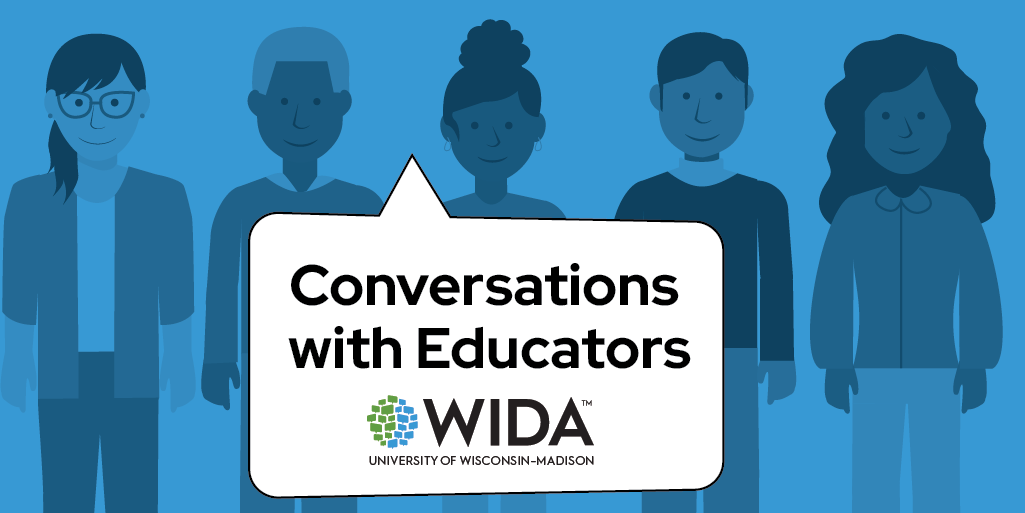Resources/Recursos
Featured Resources

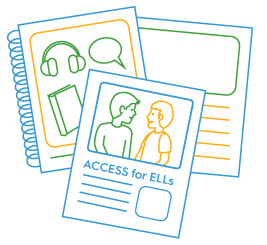
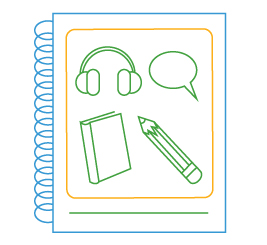
All resources/Todos los recursos
Filter resources by:
Resources/Recursos
Marco ALE: Aplicación para la actualización y desarrollo de estándares
Marco de referencia de las artes del lenguaje del español de WIDA: Aplicación para la actualización y desarrollo de estándares is the first Spanish language arts framework of its kind in the United States. This document serves as a guide to learn more about the elements of Marco ALE and how to apply them in the enhancement, development, and alignment of Spanish language arts standards.
Written in Spanish with English summaries
Resource Details View Download NowReleased October 2021
Marco ALE: Aplicación para la enseñanza
Marco de referencia de las artes del lenguaje del español de WIDA: Aplicación para la enseñanza is the first Spanish language arts framework of its kind in the United States. This document serves as a guide to learn more about the elements of Marco ALE and how to apply them in the teaching of Spanish language arts. Note: This is a sample of the document. Visit the WIDA Store to purchase the complete version.
Written in Spanish with English summaries
Resource Details View Download NowReleased August 2021
Putting It All Together: Next Steps for Using the 2020 Edition
In this webinar, the WIDA standards development team discusses and models the tools, provided in the 2020 Edition, for initiating critical conversations with school leaders and colleagues.
Resource DetailsReleased March 2021
WIDA English Language Development Standards Framework, 2020 Edition
The WIDA English Language Development (ELD) Standards Framework, 2020 Edition: Kindergarten – Grade 12 is a document that provides a foundation for curriculum, instruction and assessment for multilingual learners in kindergarten through grade 12. The ELD Standards Framework fosters the assets, contributions, and potential of multilingual learners. The 2020 Edition serves as a resource for planning and implementing language instruction and assessment for multilingual learners as they learn academic content.
Grade level cluster-specific versions of the 2020 Edition are also available.
Resource Details View Download NowReleased February 2021
Curricular Considerations: Introduction to Collaborating Around the 2020 Edition
The WIDA ELD Standards Framework, 2020 Edition brings new practical ways for all educators working with multilingual learners to conceptualize the development of content and language together through asset-based, equitable, and rigorous approaches in curricular design. This session will encourage participants to think about what collaboration looks like in these contexts.
Resource DetailsReleased February 2021
Introduction to the Updated Key Language Uses
One of the components of the WIDA ELD Standards Framework is the Key Language Uses (KLUs). The KLUs summarize the most prominent language uses across disciplines, helping educators organize and prioritize curriculum and instruction. Learn about the updated KLUs – Inform, Narrate, Explain and Argue.
Resource DetailsReleased February 2021
WIDA Screener for Kindergarten Proficiency Level Descriptors
This guide illustrates a continuum of language development for multilingual Kindergarten learners and describes what they can do across six levels of English language proficiency.
Resource Details View Download NowReleased February 2021
Introduction to the 2020 Edition
Members of the WIDA standards development team share a high-level overview of what’s new and exciting in the WIDA English Language Development Standards Framework, 2020 Edition. Intended for SEA representatives, district leaders, and EL and content teachers.
Resource DetailsReleased January 2021
ACCESS for ELLs Parent Letters (multiple languages)
This letter, available in many languages, contains general information about ACCESS for ELLs and is meant to accompany ACCESS for ELLs score reports as an explanation for parents and guardians. It is provided in an editable format to allow districts and schools to include additional information regarding test administration dates and state policy.
Resource Details
Released December 2020
Performance of Technology-Enhanced Items in Grades 1–12 English Language Proficiency Assessments
Technology-enhanced items (TEIs) are innovative, computer-delivered test items that are more authentic and interactive than traditional multiple-choice items (MCIs). This study examines the performance of grades 1–12 English learners on TEIs compared to MCIs on the reading domain of ACCESS for ELLs Online.
Published December 2020
Authors: Ahyoung Alicia Kim, Rurik L. Tywoniw, Mark Chapman
Released December 2020
Introduction to the WIDA ELD Standards Framework, 2020 Edition
This video provides an introductory overview of the WIDA English Language Development Standards, 2020 Edition. It briefly highlights how the 2020 Edition fosters the assets, contributions, and potential of multilingual learners.
Resource DetailsReleased December 2020
Illustrated Guiding Principles of Language Development (multiple languages)
This illustrated booklet, available in multiple languages, brings each of the 10 WIDA Guiding Principles of Language Development to life and can be used by educators with parents, families and community members.
Resource DetailsReleased November 2020
Generating Imputed Overall Composite Scale Scores for English Learners With Disabilities Who Are Missing Domain Scores in the ACCESS for ELLs Assessment
This technical report aids WIDA Consortium members and stakeholders in producing imputed overall composite scale scores and proficiency levels for students who are missing scores in one or two domains due to a disability.
Published September 2020
Author: Narek Sahakyan
Released September 2020
Folleto de la prueba ACCESS for ELLs para padres
Este documento ayuda a los padres y a las familias a comprender la prueba de WIDA ACCESS for ELLs y sus componentes.
Detalles del recurso Ver Descargar ahoraReleased August 2020
¿Qué es ACCESS for ELLs?
Envíe este folleto de introducción a ACCESS for ELLs en español con los estudiantes cuando la prueba esté programada o como un recordatorio para los padres antes de que se le compartan las puntuaciones. Este folleto explica qué es ACCESS y por qué los estudiantes son evaluados de esta manera. Utilice este recurso para ayudar a los padres a comprender las pruebas anuales de competencia lingüística.
Detalles del recurso Ver Descargar ahoraReleased August 2020
Educación en el mundo actual
This Focus Bulletin offers strategies for advancing full and meaningful access in bilingual settings during the mundo actual of COVID-19. The bulletin emphasizes the importance of valuing multilingual learners’ linguistic and cultural wealth, using translanguaging, and leveraging technological resources.
Published August 2020
Authors: Sam Aguirre, Erika Rosales
Released August 2020
What Is WIDA ACCESS? (multiple languages)
Send this handout, available in multiple languages, home with students as an introduction to ACCESS when testing is scheduled or as a reminder before scores are shared. This flyer explains what ACCESS is and why students take this kind of assessment. Use this resource to help parents understand annual language proficiency testing.
Note: For family handouts that explain English learner status and language testing, refer to the What Is WIDA Screener? and What Is WIDA Alternate Screener? handouts.
Resource DetailsReleased July 2020
ACCESS for ELLs: Understanding Your Child's Scores (multiple languages)
Send this flyer home with students along with the ACCESS for ELLs Individual Student Report. This flyer explains each piece of score information included in the report. Use this guide, available in several languages, to help parents understand what scores mean and how they are used.
Resource DetailsReleased July 2020
Design Principles for Engaging Multilingual Learners in Three-Dimensional Science
WIDA and the National Science Teaching Association formed Making Science Multilingual to support inclusive forms of science instruction through which all students, but especially multilingual learners, can learn science and language simultaneously. To guide this work, the Making Science Multilingual team devised eight design principles to define the integration of contemporary three-dimensional science and language-in-use pedagogies. These principles will guide educator resource development at both organizations and facilitate critical examination of how well educator resources support inclusion of multilingual learners in rigorous science learning.
Resource DetailsReleased February 2020
Examining the Relationship Between the WIDA Screener and ACCESS for ELLs Assessments
This report describes a study that examined to what extent scores on WIDA Screener predict scores on ACCESS for ELLs. Researchers found that Screener scores are strongly predictive of ACCESS scores, even when a variety of individual factors are accounted for.
Published February 2020
Authors: David MacGregor, Narek Sarakyan
Released February 2020

